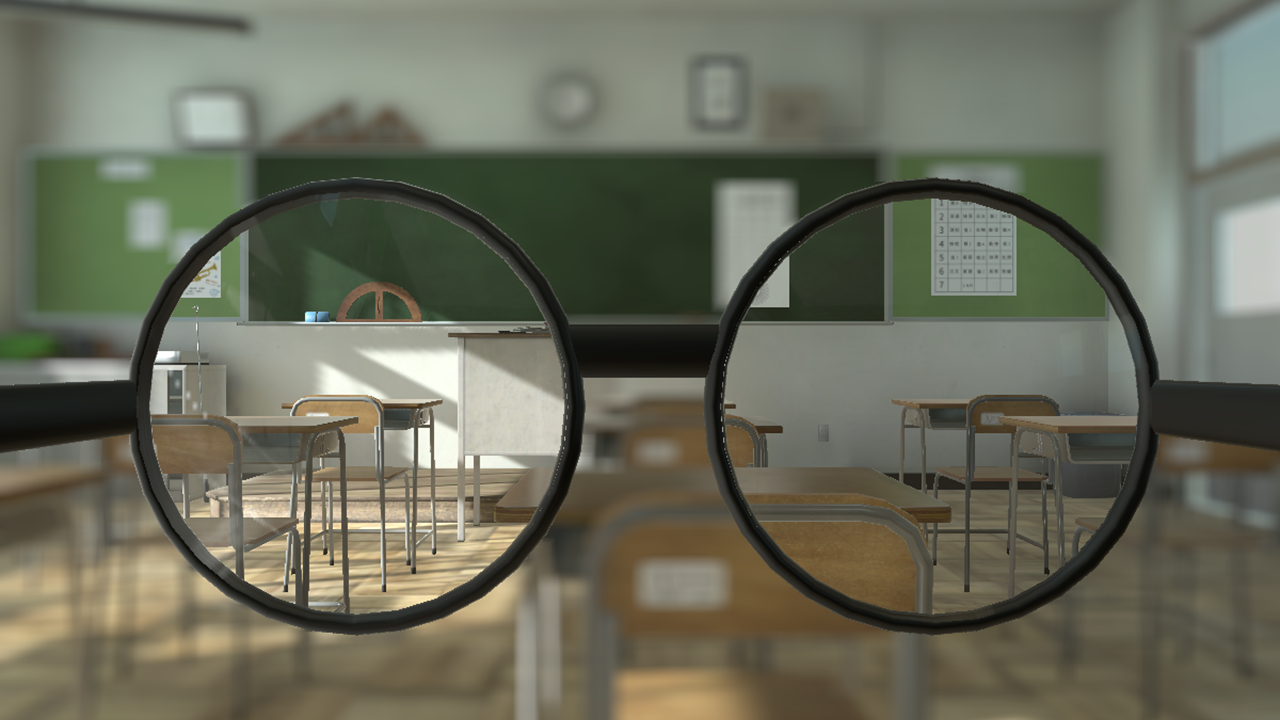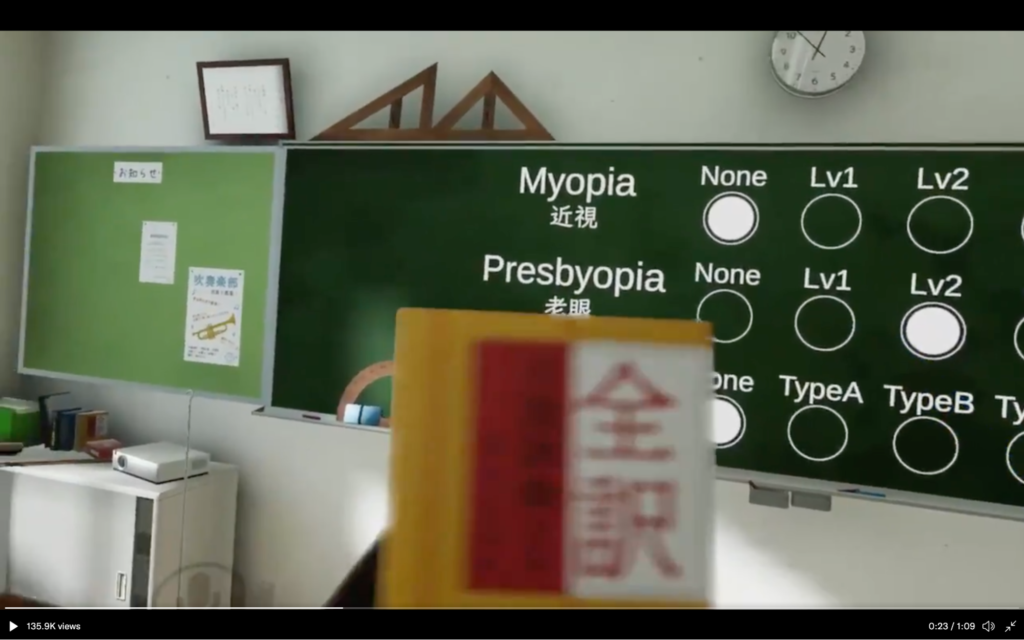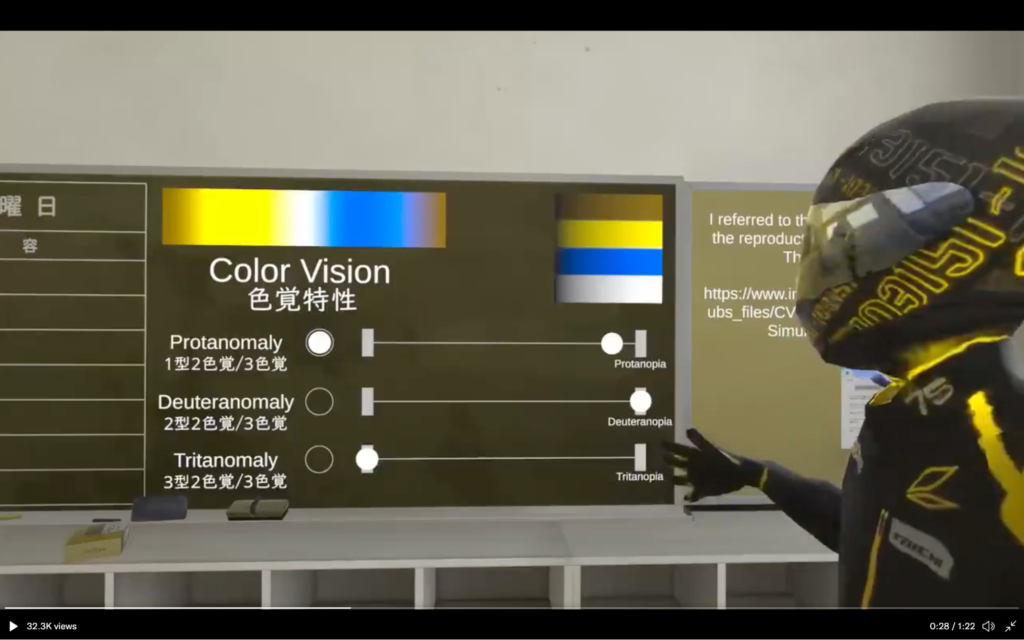Summary

I’m nearsighted. When I was a child, my friends would often hold up two fingers making a V sign and ask, “How many fingers do you see?”
“I can see the number of fingers, but I can’t see the letters on the blackboard,” I replied.
My friends never understood what nearsightedness meant. Thanks to virtual reality (VR) technology, people with 20/20 eyesight can learn what nearsightedness looks like.
About NearSighted Classroom
VoxelKei is a VR world developer from Japan. He created NearSighted Classroom (VRChat) to give people the opportunity to experience how a nearsighted person sees the world. This is a virtual reality space inside VRChat that anyone can enter for free. Try it for yourself!
He announced the release of the world in the following tweet.
近視の人が見ている世界をVR空間で体験出来るワールド「NearSighted Classroom」をpublishしました。学校の教室にいるときド近眼にはこう見えているというのを近眼じゃない人にも伝えられるのではないかと思います。メガネがいかに大切かというのも体感出来るのではと。ワールドURLはリプ欄に #VRChat pic.twitter.com/YgIp9Hk9xa
— VoxelKei (@VoxelKei) April 11, 2021
The tweet received a tremendous response with thousands of retweets and likes. Many people replied to the tweet asking him to simulate a variety of eye conditions. These include astigmatism, presbyopia, and color blindness. Within a month after the first release, he added those features. The world allows visitors to select the eye condition and the level of the condition from none to severe.

I wanted to learn about presbyopia. People with this vision can see faraway objects clearly while nearby items appear blurry. This surprised me because my vision is the opposite of this where nearby items appear clear and faraway items look blurry.

The Nearsighted Classroom allows people to compare what it’s like for someone to view the world with and without their glasses. The previous screenshot shows how something further away shows up clearly while wearing glasses. And it shows the room outside of the glasses, which appears blurry.
The classroom allows you to pick myopia, presbyopia, and astigmatism. For Myopia and Presbyopia, visitors can select none or levels 1, 2, or 3. Level 1 is mild and Level 3 is severe. Astigmatism is different from the other two as it can distort and blur a person’s vision. It can be combined with the other conditions.
You can combine these settings to create an accurate simulation of your vision. The vision is synchronized within this world, so if you enter with your friends, they can experience your vision in real-time.

The classroom also simulates the different color blindness. According to the National Institutes of Health’s National Eye Institute states that deuteranomaly and protanomaly are two types of red-green color blindness. Deuteranomaly makes green like more red. Protanomaly makes red look more green and less bright.
Then there’s tritanomaly, which makes it hard to distinguish between blue and green as well as between yellow and red. You can adjust the RGB sliders to simulate different levels of these types of color blindness.
Q&A with VoxelKei
VoxelKei took a moment to answer a few questions.
What is the advantage of using VR to express vision?
Photos can only show so much of what a person’s vision is like. And they’re limited to whatever the image shows. With virtual reality, you can adjust the settings for different conditions and levels. VR allows us to share our visual experiences in real-time.
What potential do you see in VR?
I see a lot of potential in being able to convey your physical characteristics in a completely different way than with still images or videos. Also, VR allows you to create an avatar that does NOT represent your physical appearance.
This lets people get to know you for yourself without prejudice based on race, age, gender, voice, or any other appearance. For example, I am currently working with a music composer I met online. I do not know the identity of the person. All I know is that the person makes very good music.
What are your plans?
I am a VR specialist. I think it will be important for specialists in other areas to use VR. It shouldn’t just be VR specialists using VR. It may be a hurdle for big names in already-established industries. For instance, it would be hard for the music industry to move into VR as it is established and not used to doing things in VR.
I feel that there is a lot of potential in pairing music with VR. I would like to connect with experts in other fields that can use VR. I’d like to do some cool projects with them.
The Power of VR Experiences
Often, people tend to think of games when it comes to VR. But it has so much potential and applications beyond games. VoxelKei’s work shows how it’s possible to experience and understand another person’s disabilities and physical characteristics in VR.
Creating accessible VR experiences will allow people with all kinds of disabilities to enjoy VR and improve their quality of life. Additionally, people with disabilities and non-disabled people are often segregated in society such as education and the workplace, especially in Japan.
I believe that interaction in VR will deepen the relationship of trust between the non-disabled and the disabled. It will also raise awareness of the barriers that currently exist. That is why the Equal Entry team is committed to exploring how it’s possible to create accessible VR experiences.
If you want to do a VR project, contact VoxelKei.